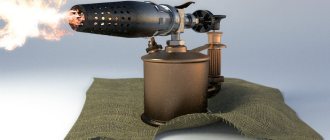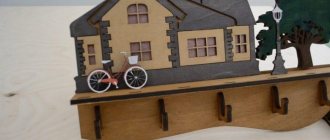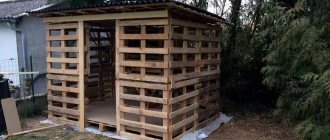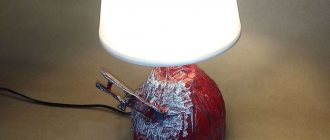Each of us has done renovations to our premises at least once. And there were times when it was necessary to rise to a certain height. Constantly placing a chair is not an option, and a stepladder is too large and interferes with work. At such a moment, special construction stilts are perfect. They are practical and compact. And their most important advantage is the ability to select a certain optimal height that is convenient for work. Such a tool will be useful in any home. But not many people know how to make construction stilts for the home and what material to use.
Pros and cons of this mechanism
The main advantages can be considered factors such as:
- fast speed of work, convenient and quick replacement of anything at height;
- ease of work, since the performer can move to the desired place of work at any time without any problems;
- height adjustment of the instrument, adapting to any height of a person and the height of the room.
The disadvantages include several points. For example, the high price of equipment. You should also take into account that special seat belts are required for operation. When performing work at height, there must be a flat floor surface, as you can trip and fall, causing harm to the body.
What kind of object is this?
Thanks to construction stilts, a person can rise to a height of 40 to 100 cm, and at the same time feel absolutely free.
Construction stilts are also called drywall stilts; they are most popular in America and England. They are two supports on which the feet are attached. However, this is their most primitive definition. Modern construction stilts have many models from various manufacturers.
As practice shows, having stood on construction stilts for the first time for 5-10 minutes, you can easily master the technique of walking on them and easily carry out repair work at height.
When choosing stilts , keep in mind that they have a weight limit. They can be used by a person weighing no more than 105 kg.
When buying stilts for repairs, you need to take into account that they come in different heights:
- up to 265 cm;
- up to 285 cm;
- up to 310 cm.
Please note that the greater their height, the harder it is to work on them. So, if you are new to playing this instrument, then you should not immediately choose the highest ones.
Necessary parts for construction stilts
Today there are a large number of described mechanisms. And in order to make construction stilts with your own hands, drawings are simply necessary. To make this tool you will need tools. Be sure to prepare:
- hard wooden beams with sections 50 by 50 and the required length of about 250 cm;
- base board;
- sheet rubber;
- fastening materials of various types;
- construction stilt drawings.
Making stilts
- You should pay attention to Figures 5 and 6. There the emphasis is on the displacement relative to the vertical axis. This is necessary for stability when not moving, and to prevent overexertion of the legs. Full details of the stilt parts with dimensions are given in Figures 4 and 5.
- The rubber used is from a technical rubber mat.
- Nagel (screw for concrete), used 100 mm long. It can be longer, but I don’t recommend shorter (however, it will break your legs).
- Instead of straps, I used strips cut from a strip of vinyl siding to secure the legs. But they rub. So better belts. And in connection with this, I did not make diagrams or descriptions of specific sizes.
- Calculations of the foot and sole are made for foot size 42.
Stilt assembly sequence
First of all, you need to prepare the wood for use. It is necessary to process the material, and this requires smoothing the wood using a plane. The base boards must be treated with sandpaper and impregnated with a special solution. Next, to make construction stilts with your own hands, you need to attach paws. They are fixed with screws and nails. Fastening occurs at the ends of the beam. The paws attached to the top should be equipped with rubber gaskets for greater stability.
In order to make construction stilts with your own hands, you need to make and attach footrests. These areas will be protruded by the worker’s feet. The first thing to do is pre-drill holes for better fastening and installation. Additional holes should be made at a short distance from each other. This is done to further change the height of the stilt. The minimum height of the first hole is from 10 mm to 70 mm. This allowed distance is used for better stability and good balance. The footrests themselves are made of thick timber, the size of the foot.
The next step is to fix the footrests using bolts and nuts at the desired height. At this point, DIY construction stilts are considered ready for use. Of course, this tool is primitive and not suitable for professional use, but it is well suited for home work.
Leg attachment
Foot toe attachment
It should hold the toe firmly in place. Adjustable to fit and detachable.
Heel fastening
It is optimal to fasten diagonally.
It is adjusted to the leg and fixed.
Calf Attachment
This is done using a central tape.
Attach exactly as shown in the figure below. This is optimal and reliable for fixing the foot. Unfastened.
Rice. 8. Unit for fixing the foot and leg to the stilts.
To fix the knee, a cardboard gasket glued with tape was used. But it is better to use 10 mm isolon or other similar materials.
Rice. 9. Support rail for fixing the leg.
Option 2 stilts
Theoretical diagram of stilts with height adjustment.
Selection of store-bought construction stilts
When purchasing such a product, first of all, you should pay attention to the brand of the instrument. Devices made in America and Europe are very popular. Next, you need to pay attention to the optimal permissible weight. It must be 100 kg and above. This characteristic is necessary for safety reasons. Also, when choosing this product, do not forget about the adjustable height of the feet. It is this adjustment that will help you choose the right and correct height for work.
The presented tool is very useful in everyday life. Even hand-made construction stilts will last for many years. They make it very easy to renovate a room. Especially if the repair involves painting or plastering walls, as well as working with suspended ceilings. Lightweight work with the help of stilts will now be completed twice as fast as it was previously.
Epic DIY Adjustable Stilts!
Hey everyone, I'm going to be posting my first tutorial today, so let's get started!
This all started a week before a science trip to Paynes Prairie Preserve State Park where we could hike the La Chua Trail. While our science guide was telling us about the trail, I had an idea, so I raised my hand and asked, “Can I walk this route on stilts? He answered: “If you can.” I think that no one believed me and everyone thought that I could never walk this route on stilts, which made me come to the decision to actually do it. That evening I came home and drew some sketches and thought I'd share what I made! For this project you will need::
• An old pair of crutches (You can buy new ones for about $30 or used ones for $10)
• An old pair of sneakers (boots, tennis shoes)
• Plywood (close in thickness to crutches)
• a piece of plywood 5 cm thick and 15 cm wide
• PVC pipe (optional)
• Foam (optional)
• Construction hair dryer (optional)
• 6 self-tapping screws 70mm, 16 self-tapping screws 25mm, and one pair of bolt-nut 3 cm 5/16-18
Denial of responsibility:
We all like to have a good time, so please use not only these stilts wisely, but all others as well, and I am not responsible for any injuries sustained while using these things. Use common sense, including knowing in advance that the path you are about to take on your meter-long stilts is 16 kilometers. Don't forget also that half of this route is a narrow bridge with a meter high railing, three meters from water full of alligators. Also, make sure you realize that the rest of the route is slippery clay plus all your classmates trying to get past you, and that those same classmates will be urging you to climb the stairs with the same meter-long railings onto a 6-meter tower. Most importantly, don't forget that you will have to do it again, returning to where you came from. Practice on a flat surface, preferably grass, with short walks.
Step 1: Trace the inner outline of the crutches and cut out
Take some plywood (make sure it's about the same thickness as the crutches) and after removing the handle, trace and cut out the inside of your crutches on the plywood. You can use the first piece to outline the second. This way we get a base for the footrests!
Make sure that the parts are a little larger, the contact should be tight. Excess can always be sanded off.
Step 2: Attach the plywood to the crutches
Drill a hole in the plywood using the top hole in the spike as a guide. You can then use the hardware from the handle to secure the plywood in place.
Make sure you drill absolutely STRAIGHT, especially if you have to drill from the other side to get through. Use a hammer to help install the fastener more easily if necessary.
Step 3: Add a Mount
Cut four staples to keep the bottom of the plywood from flipping over. Then grind, drill and secure them with 3cm 5/16-18 bolts and nuts.
You don't have to use aluminum for this step, you can use plywood (I only used it because I had some on hand).
Step 4: Repeat what has already been done
By now we should have something similar to this. Notice that the bottom of the plywood is in contact with the support, which rests on the ground. This will help transfer your weight to the ground through the strongest part of the crutches.
Step 5: Cut and Add a Footrest
Cut the plywood 5*15 (about 25 cm) diagonally and attach it to the middle of the central part of the crutches, making sure that this is really the middle. We have already fixed the lower part. Use at least three 70mm self-tapping screws to secure the stop in place.
Step 6: Cut and Add a Leg Shelf
Now you need to trace around your tennis shoe with an indentation of about 0.6 cm and cut out the outline with a jigsaw. Then secure this shelf firmly in place. Use 6-8 25mm self-tapping screws to secure the shoe as securely as possible.
Step 7: Make Your Stilts Comfortable
Now you can attach a strap to the stilts and just start walking on them, but if you add a little PVC and foam, you'll have a pair of stilts you can really be proud of.
Step 8: Cut and Shape the Leg Mounts
Measure and cut two 17 cm pieces from a 10 cm diameter PVC pipe (preferably standard 20) and cut them lengthwise. After this, use a heat gun to shape them to fit your feet (this needs to be done carefully to give you maximum support)
The PVC 20 standard is easier to shape.
Step 9: Trim the Foam
Insert foam into the pipe to select the appropriate length
Add 0.5 cm to the length of the foam on each side so that the edge of the pipe does not cut into the skin.
Step 10: Glue the foam in place
Use some kind of adhesive spray to coat one side of the foam. Bend it in half and carefully place it into the PVC pipe. Use duct tape to cover any excess glue. Then secure this in place using 3 25mm drywall screws.
I recommend trying on the stilts and pipes separately while sitting on the ground to ensure you are attaching the pipes at the correct angle.
Step 11: Tips
Place the washer in a 3cm PVC cup to protect the aluminum end from abrasion. Place a rubber furniture cap on the PVC cup and insert a ten-centimeter piece of 25mm standard 20 PVC pipe into the cup. Then put this on the ends of your crutches. If you want to increase the footprint, you can put a small shoe on the tip. Interestingly enough, I received more comments about the children's shoes based on the stilts than I did about the stilts themselves and the fact that I actually walked on them!
My crutches didn't have tips. If you have them, then you can of course skip this step.
Step 12: Enjoy!
Thank you for your attention and for reading to the end! Here's a short video of me playing with my stilts! If you liked this tutorial, let me know!
Design
Externally, such stilts at first glance resemble elements of some kind of exoskeleton: articulated, rotating (though only in one plane) feet, adjustable “legs” in length, equipped with fastening devices, clamps for fixing the worker’s legs. All these parts are functionally interconnected in order to ensure the integrity of the construction stilts during movement.
The most convenient construction stilts for use include the following units:
- Adjustable feet in length (and sometimes in width).
- Soles with linings made of friction material with sufficient wear resistance, and some manufacturers also include a replaceable pair of such linings in the kit.
- The foot rotation unit, which, in turn, consists of a pin, two bearing sockets and return springs, which ensure the safety of using stilts in case of accidental pressing of the worker on the supporting surface of the feet.
- Aluminum rods, the height of which can be adjusted using an eccentric clamping mechanism. In more expensive models of construction stilts, the mechanism can be controlled remotely using a rack and pinion transmission.
- Footrests with a corrugated surface, which are attached to the upper end of the bars, and serve as support for the worker’s feet.
- Running rails that connect the rods to the sockets for attaching the equipment in question to the lower leg. The slats have the ability to discretely change their height according to a person’s height (3…6 positions).
- Fastening straps that wrap around a worker’s leg. They must be made from elastic rubber-fabric compositions that are tested to five times the tensile strength (whether this is true or not, one can only hope).
When producing these products, their manufacturers are guided by conflicting requirements. On the one hand, the mass of stilts should be minimal to facilitate their practical use. On the other hand, some structural elements - springs, rack and pinion mechanism - must be made of steel for reliability purposes.
Construction stilts are supplied assembled, so they do not take up much space in the overall equipment. Before using them, you only need to adjust the height of the rods and running rails to the specific height of the room and the anthropometric data of the worker.
Where can they be used?
It makes sense to use construction stilts in hard-to-reach places where it is impossible to install more load-resistant building structures - stairs/ladders, scaffolding, trestles, etc. such places are most often:
- Corners of rooms and halls (when installing suspended or suspended ceilings, in finishing, plastering and electrical installation work without the use of massive tools that cause vibrations during use);
- Finishing of niches, alcoves, bay windows and other perimeter elements where the use of stationary high-rise devices is impossible;
- Internal construction and repair work in rooms where there is furniture or other interior items that cannot be removed from the room, for example, fireplaces, wall-mounted water heaters, etc.;
- Mechanized work on painting ceilings using a spray gun (with manual painting, the lack of a working platform will cause the worker to constantly move around the floor, which is tiring).
In general, the effectiveness of construction stilts increases when the labor intensity of the construction and repair transition at a certain high-altitude section of the room increases, and the need for tools that should be at arm's length (and horizontally, not obliquely) is low. Otherwise, you will have to constantly move on stilts, and this, as noted earlier, is not always convenient.
The main technical characteristics of stilts are:
- Load capacity, kg. Devices are produced that allow a load of at least 110 kg.
- Sole sizes range from size 38 to size 45.
- Adjustment height of running rails, mm – 380…1000.
- Maximum application height, m – 2.65…3.71.
- Own weight, kg – 5.8…7.3.
When choosing a manufacturer of construction stilts, you should take into account the intensity of use of the devices. For example, professionals who often use such products give preference to the SkyWalker line of stilts from the American company Marshalltown. These products are distinguished by reliable assembly, and high-quality aluminum and composite materials are used in the manufacture of components. The price of such products is 49,000... 54,000 rubles.
The budget niche of construction stilts is represented by products from the Stilts brand (China). Their price, depending on the standard size, is in the range of 7,000...15,000 rubles.
Features of operation
Getting used to walking on construction stilts is not easy: with a lack of experience, falls from a height are possible, which can be accompanied by serious injuries. This is due to the design of the product: the center of gravity of the stilts does not allow any significant deviation from the conventional longitudinal axis. At the same time, as the length of the sole increases, stability increases, therefore, at the expense of functionality (too long soles make it difficult to get close to the wall of the room being finished), construction stilts with an increased sole, rather than height, gain an advantage.
The method of movement will also require special skill, since sliding of the feet of stilts on the surface of the room where the tool in question is used is excluded. Therefore, it is necessary to move, alternately pushing forward (“moving backwards” on stilts is generally not recommended) first one barbell, then the other, and the movement step should not exceed half the length of the sole. Obviously, before use you will need to perform a series of training sessions, and with an assistant. And, of course, carefully study the instructions for the product.
The choice of standard size and subsequent adjustment of all structural elements of construction stilts should be made taking into account the following factors:
- Anthropometry of the user: foot size, shin height and girth in the required place.
- The height of the room in which finishing work needs to be carried out. The user's hand, when working at the highest point, must ensure an angle between the shoulder and elbow joints of no more than 150...160°.
- The condition of the floor, which should not have any unevenness, cracks, or grooves. Naturally, the coating should be free of any grease or oil contamination. It is not recommended to use stilts on stepped surfaces.
- The worker's overalls and shoes must also take into account the peculiarities of using stilts: wet shoes, for example, reduce traction with the sole, and the absence of pockets or shoulder straps for working tools or bags makes the use of stilts simply inconvenient, since in this case it is impossible to get any objects from the floor impossible.
- Worker's health status. In particular, with existing vascular insufficiency of the peripheral circulatory system, prolonged compression of the lower leg can cause a dangerous increase in blood pressure.
- User weights.
Here, by the way, is a good video where a master shares his experience of using construction stilts.











